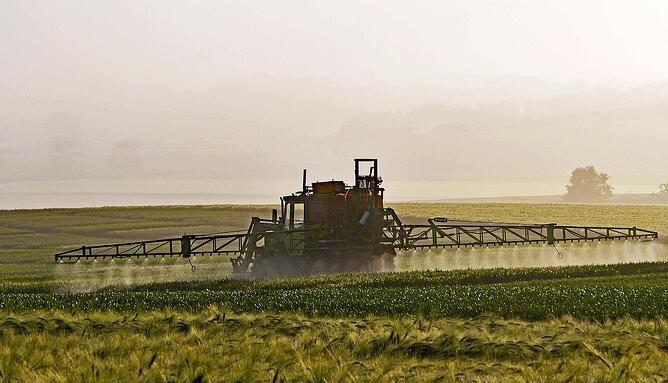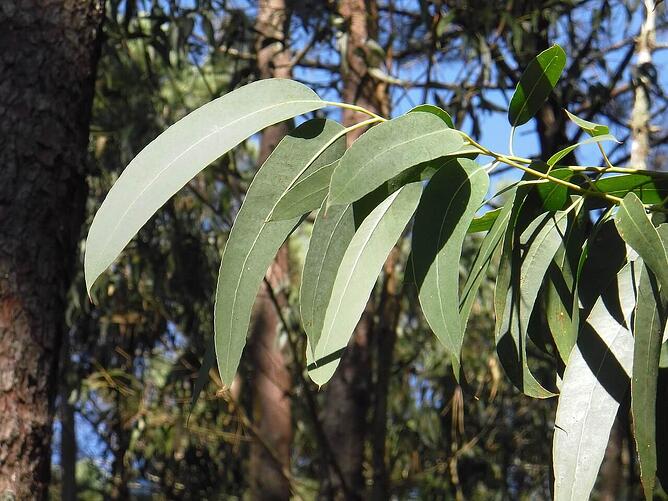
As fellow Australians, we can say we are not particularly fond of common pests like cockroaches, termites, spiders, and wasps, but when it comes to new Australian pests we are terrified.
More and more new and destructive pests are affecting our homes, farms, and shores. Our ecosystem is a delicate one, and researchers are always trying to find new ways to eradicate and prevent foreign pests.
If you are dealing with a common pest, hiring a pest control specialist can make a huge difference, both for the short and long term. If you suspect that your property is affected by something different, then check out this list of Australia’s latest pests.
1.The Buff-tailed Bumblebee or The Large Earth Bumblebee
-2.jpg?width=668&name=76%20(7)-2.jpg)
While it is well-known that bees are great at supporting and promoting biodiversity, not all of them are equally beneficial. The large earth bumblebee, also known as the buff-tailed bumblebee, is not native to Australia. Being native to Europe, the buff-tailed bumblebee was introduced to Tasmania and New Zealand in the early 90s and has since become quite widespread.
Although it might seem that the fuzzy bumblebees are harmless, that is not the case, as these buggers will compete with other native species of bees. Additionally, the bumblebees will pollinate weeds, such as the Scotch Broom, which is an invasive plant that can spread fast and prevent the reforestation, causing significant losses for the forestry industry.
Conservationists and researchers are working tirelessly to find new ways of preventing the bumblebee from becoming even more problematic. If you notice an area that is affected by the buff-tailed bumblebee, you should contact the Australian Department of agriculture and water resources.
2. The House Longhorn Beetle or The European House Borer
-2.jpg?width=668&name=76%20(4)-2.jpg)
The house longhorn beetle is a type of pest that can be found in newly-built houses because it is attracted to freshly-harvested wood that has a high level of resin. These beetles like to feast on different types of coniferous timber such as fir, pine, and spruce. In Australia, the house longhorn beetle can cause significant structural damage to homes made of pine wood, as well as to pine furniture, roofing, architraves, and frames.
Currently, the house longhorn beetle is endemic to Western Australia. The government has put in place numerous restrictions that are meant to prevent the spread of this pest to other Australian territories. One such restriction can be found In Queensland, where anyone who is importing timber from places affected by the house longhorn beetle must have a certificate of biosecurity.
You can help stopping the spread of the longhorn beetles by hiring professional builders. Professional builders can identify the presence of the beetles and avoid using infested wood. Additionally, builders can also prevent them from spreading by using materials that the beetles are not attracted to such as treated wood. In Australia, wood is frequently affected by termites aswell, so make sure you read our Top 9 Most Common Austalian House Pests article.
If you suspect that your house or furniture might be affected by the European house borer, call a professional pest control team and schedule an inspection.
3. Dutch Elm Disease or DED
.jpg?width=668&name=76%20(6).jpg)
While the Dutch elm disease is not present in the country yet, the same cannot be said about New Zealand. This disease has been detected in Napier and in the Auckland region in 1989. In 2013, New Zealand was confronted with an extensive outbreak of DED in the southern part of Auckland. This is a major issue because Dutch elm disease can quickly spread to Australia if the government fails to contain it.
In North America and Europe alone, Dutch elm disease has affected and killed millions of elms over the past five decades. What causes DED is the fungal pathogen known as ophiostoma ulmi. Some of the most common symptoms include dying, yellowing, and curling leaves, streaks in infected branches, and wilting. DED will generally spread through the spores that are carried by elm bark beetles. Being already endemic to Australia, these beetles might be the main spreader of DED from New Zealand to Australian territories, so don't be surprised if DED will be among the latest Australian pests in the near future.
4. The Japanese Sawyer Beetle or The Japanese Pine Sawyer
-1-1.jpg?width=668&name=76%20(3)-1-1.jpg)
Despite being native to Japan and to other Asian countries such as Korea, China, Laos, Taiwan, and Vietnam, the Japanese pine sawyer can now be found in parts of Australia as well.
This new Australian pest will generally be attracted by recently-killed or cut trees. However, the main issue with the Japanese pine sawyer is that it can carry the pine wilt tree nematode, which can kill a healthy tree within months or even weeks of being infested.
Unfortunately, there isn’t much that you can do about a Japanese pine sawyer infestation. If you suspect that you might be dealing with this problem, you should call a pest control specialist who might be able to offer you some assistance. You can also report any cases of Japanese pine sawyer infestation to the Australian Department of Agriculture by calling 1800-195-543.
5. The Fire Ants or The Red Imported Fire Ants
-2.jpg?width=668&name=76%20(2)-2.jpg)
These ants are extremely dangerous and pose a threat to the Australian lifestyle. Being highly aggressive, these arthropods can inflict very painful bites on livestock, pets, and even people. If fire ants continue to spread throughout Australian environments, you are likely to feel unsafe doing certain outdoor activities such as picnics and barbeques.
Fire ants are native to South America and were introduced to Australian shores by accident. The worst thing about them is that they can proliferate and spread relatively fast in almost any environment.
The most affected part of Australia is Queensland, where red fire ants were discovered in 2001. Researchers believe that the ants were brought from North America inside shipping containers that reached Brisbane. Sydney was also affected by red fire ants and a quarantine operation was launched in order to rid the city of the pest.
According to an article published by The Sydney Morning Herald, red fire ants will cost the south-eastern part of Queensland more than $43 billion over the next 30 years unless they are contained or eradicated.
If you own a property or are thinking about buying a property in Queensland, you should check out these biosecurity zone maps created by the Queensland government.
6. Cucumber Green Mottle Mosaic Virus or CGMMV
-2.jpg?width=668&name=76%20(1)-2.jpg)
In Australia’s Northern Territory, the governments in conjunction with farmers are currently dealing with an outbreak of CGMMV or cucumber green mottle mosaic virus.
According to the ABC News, this virus was first detected on Australian land in 2014, when watermelon farmers in the Northern Territory had to destroy their crops in an attempt to prevent the spread of this devastating virus.
Unfortunately, the virus was not contained and it is still affecting Western Australia and the Northern Territory. Additionally, as of 2017, Queensland was also affected by the CGMMV. In order to protect crops, farmers have started to avoid growing cucumbers, zucchinis, and watermelons.
While the cucumber green mottle mosaic virus is not harmful to humans, it is extremely harmful to crops, as it can completely destroy Australia’s agriculture industry if it is not prevented and contained.
In order to protect crops from this harmful pest, you should avoid growing cucurbits. If you are growing them, make sure you destroy them as soon as you see any sign of CGMMV. If you need assistance with your garden, you can read our Year-round Gardening Guide or consider hiring a professional gardener.
7. Myrtle Rust

Myrtle rust was first detected on the territory of Australia in 2010 and has been spreading rapidly ever since. Being native to South America, Myrtle rust is a fungal plant pathogen that affects different plants in the myrtle family such as the eucalyptus, tea tree, and bottle brush. Some common symptoms of myrtle rust are reduced plant fertility, deformed leaves, heavy leaf loss, stunted growth, and plant death.
In 2016, researchers found that at least 350 native species of Australian plants are susceptible to myrtle rust.
Around the world, there are numerous strains of myrtle rust, but Australia is only affected by one of them. Myrtle rust spreads through spores that are easily carried by animals and by humans in their hair, skin, clothes, and by the wind, which makes it very difficult to contain, even impossible in natural settings. If you are dealing with myrtle rust, you can use different pesticides to eliminate the disease and to prevent it from spreading to other plants. If your garden is affected by myrtle rust, you should consider hiring a professional gardener.
Are you dealing with one of the aforementioned Australian pests and looking for a pest control specialist or a professsional gardener to help you get rid of them? Find local experts on Bricks+Agent by posting a job and getting quotes. For more homeowner advice delivered straight to your inbox sign up to our monthly newsletter below!


